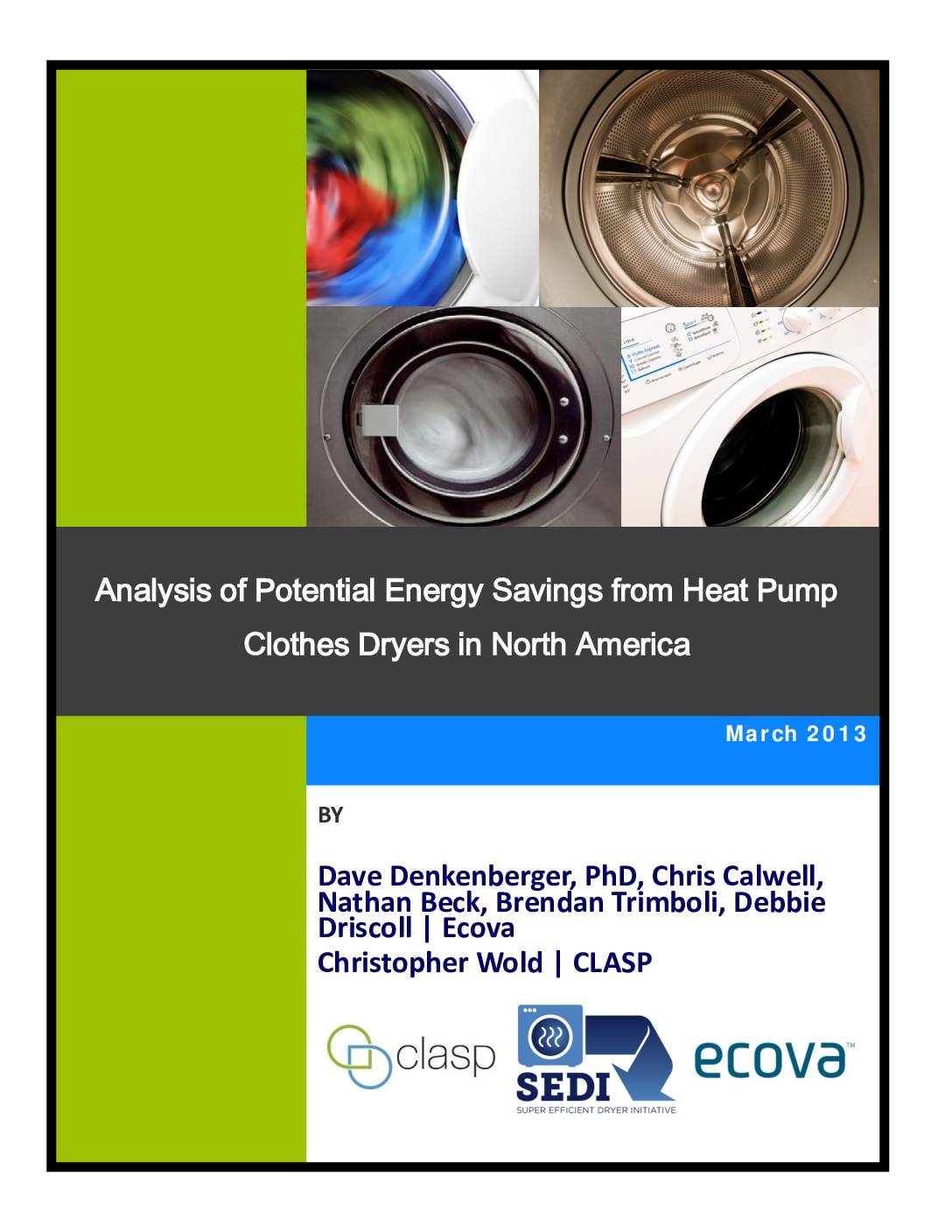Clothes dryers account for 6% of residential electricity consumption in the United States and cost consumers about $9 billion in electricity bills every year. Despite this volume, there has been little to no improvement in energy efficiency for North American dryers over the last two decades.
Recent innovations in clothes drying technology, however, offer new opportunities for energy savings. One innovation in particular – heat pump technology – has substantial savings potential. Dryers utilizing this technology have already made significant market gains in Europe, but are not yet sold in North America.
The Super Efficient Dryer Initiative (SEDI) – a collaboration among manufacturers, government agencies, utilities, and appliance retailers – seeks to introduce advanced clothes dryers into North America. Successful market introduction will require support from governments and utilities in the form of financial incentives, marketing, and efficiency labeling. To effectively implement such programs, these stakeholders must have high-quality data on the energy savings that can be expected from heat pump technology.
CLASP and Ecova conducted a study that compares the energy consumption of currently available European heat pump dryers to that of conventional North American electric dryers. It also assesses how these two technologies perform when drying test loads that more closely represent real-world clothing.
Key findings from the report include the following:
European heat pump clothes dryers use only 40-50% as much energy as North American conventional dryers to dry the same amount of laundry;
North American conventional dryers have a peak power consumption roughly five times as high as that of European heat pump dryers;
European heat pump dryers took twice as long to dry a load of laundry as North American conventional dryers; and
Drying time and energy consumption increased for all dryers when drying test loads that more closely resemble real-world clothing.
Based on these findings, CLASP and Ecova drew the following conclusions:
Heat pump clothes dryers are a mature technology with substantial energy saving potential;
A heat pump clothes dryer designed for North America could still offer significant energy savings, even if it were designed to sacrifice some energy efficiency in order to reduce drying time; and
Further modifications to the new U.S. Department of Energy test procedure, including the use of a test load that more closely represents real world clothing, are needed to more accurately predict actual clothes dryer energy consumption.
This report was a collaboration between CLASP, Ecova, the Vermont Energy Investment Corporation (VEIC), and Grasteu Associates as a part of the Super Efficient Dryer Initiative.
Share this

Sectors: Buildings, Equipment and appliances, Industry, Power sector, Renewables
Country / Region: Northern America, United States
Tags: domestic heating, drying, economic cost, efficiency labelings, electricity generation, energy, energy efficiency, energy input labelings, energy savings, financial incentives, heat pumps, heating, incentives, innovation, stakeholdersKnowledge Object: Publication / Report
Published by: CLASP, SEDI, Ecova
Publishing year: 2013
Author: Dave Denkenberger, Chris Calwell, Nathan Beck, Brendan Trimboli, Debbie Driscoll, Christopher Wold
